

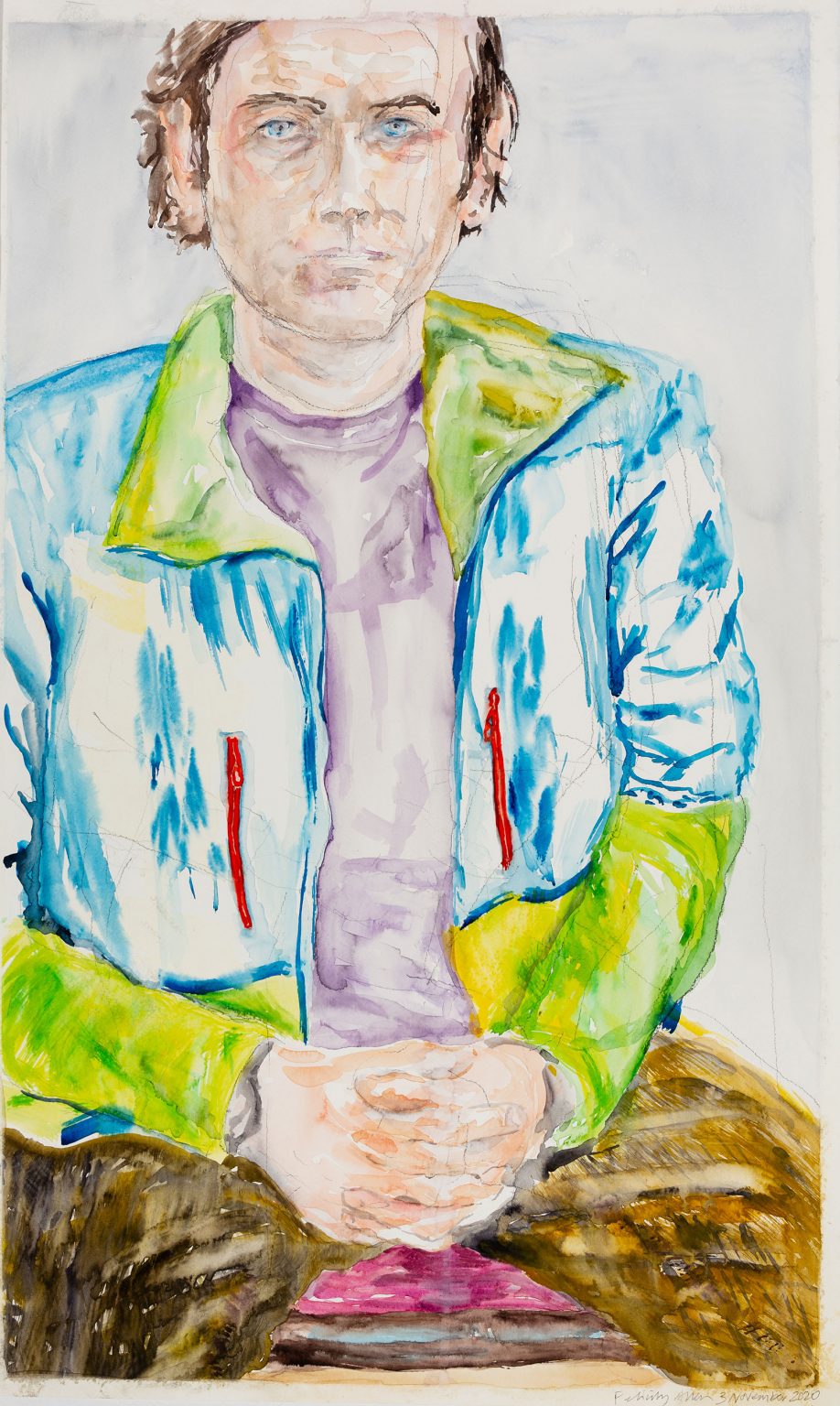
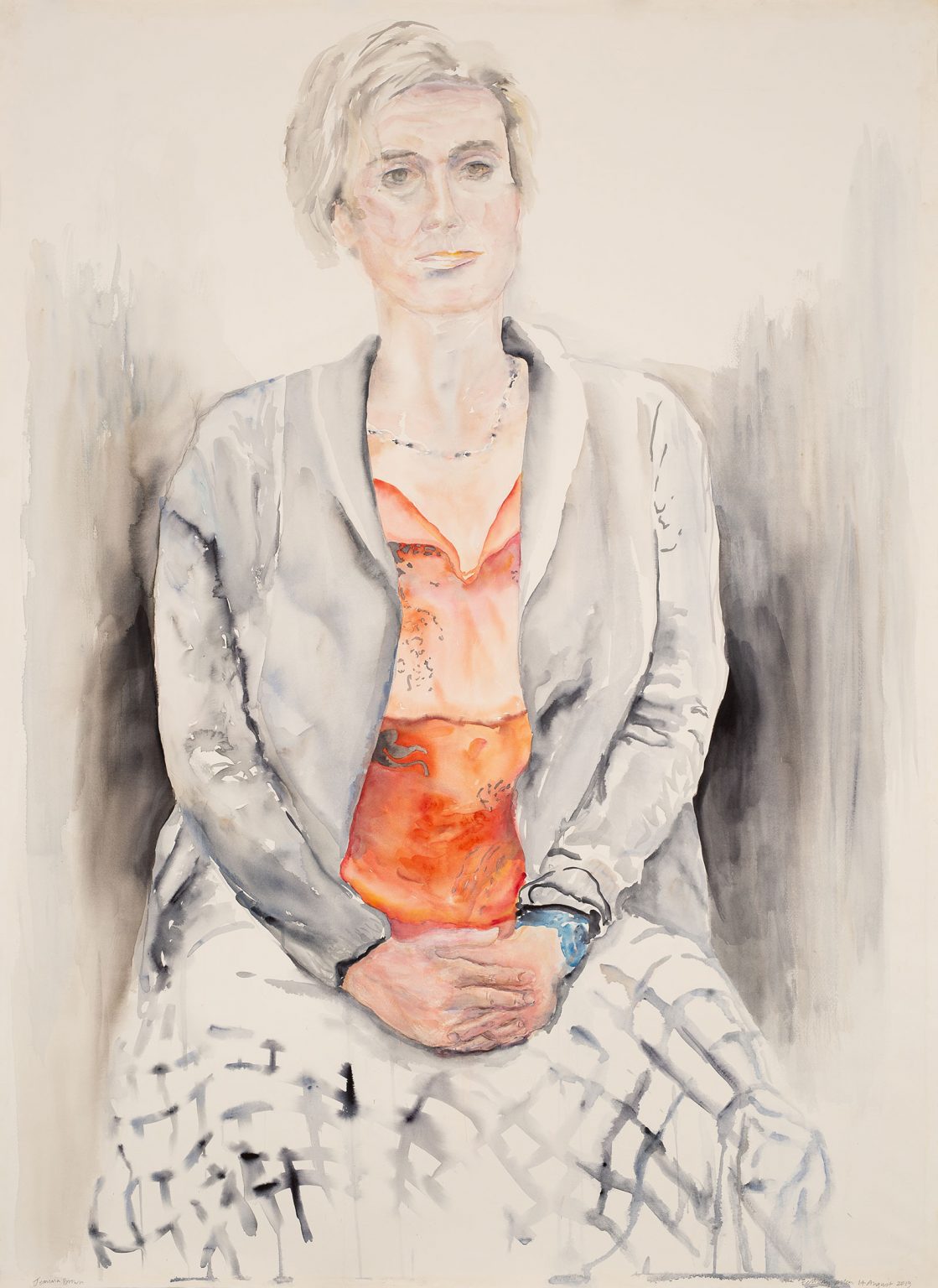
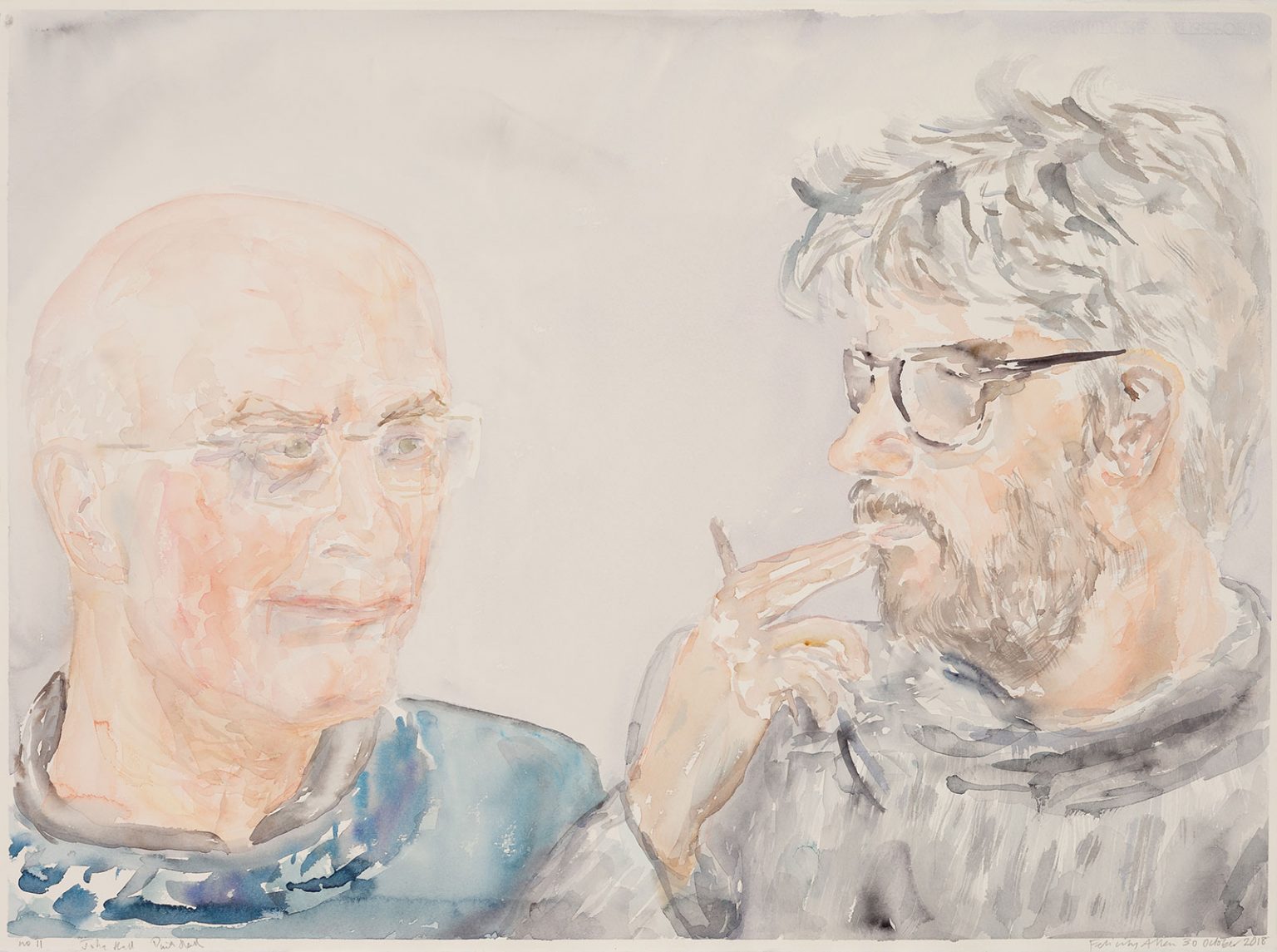
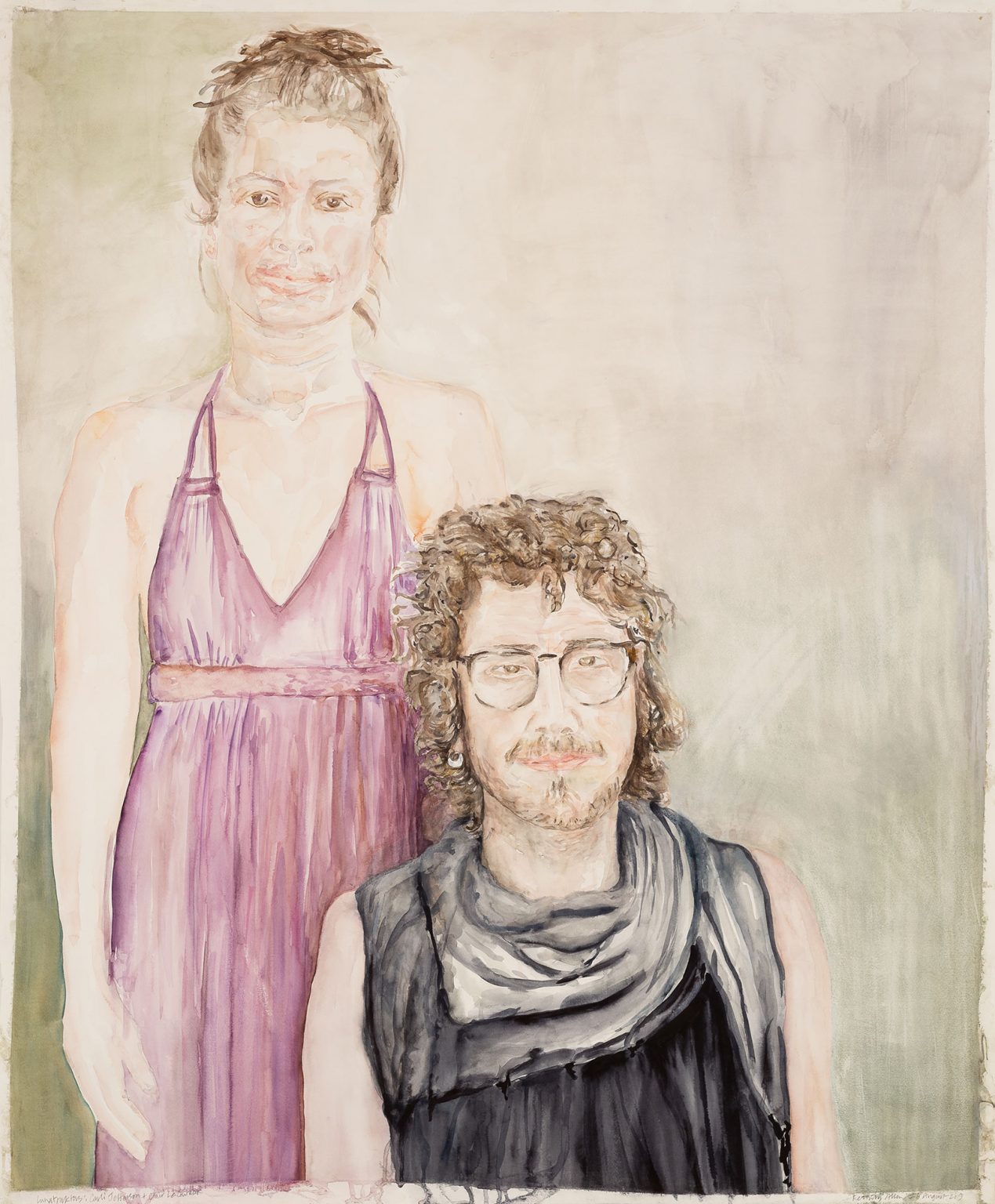
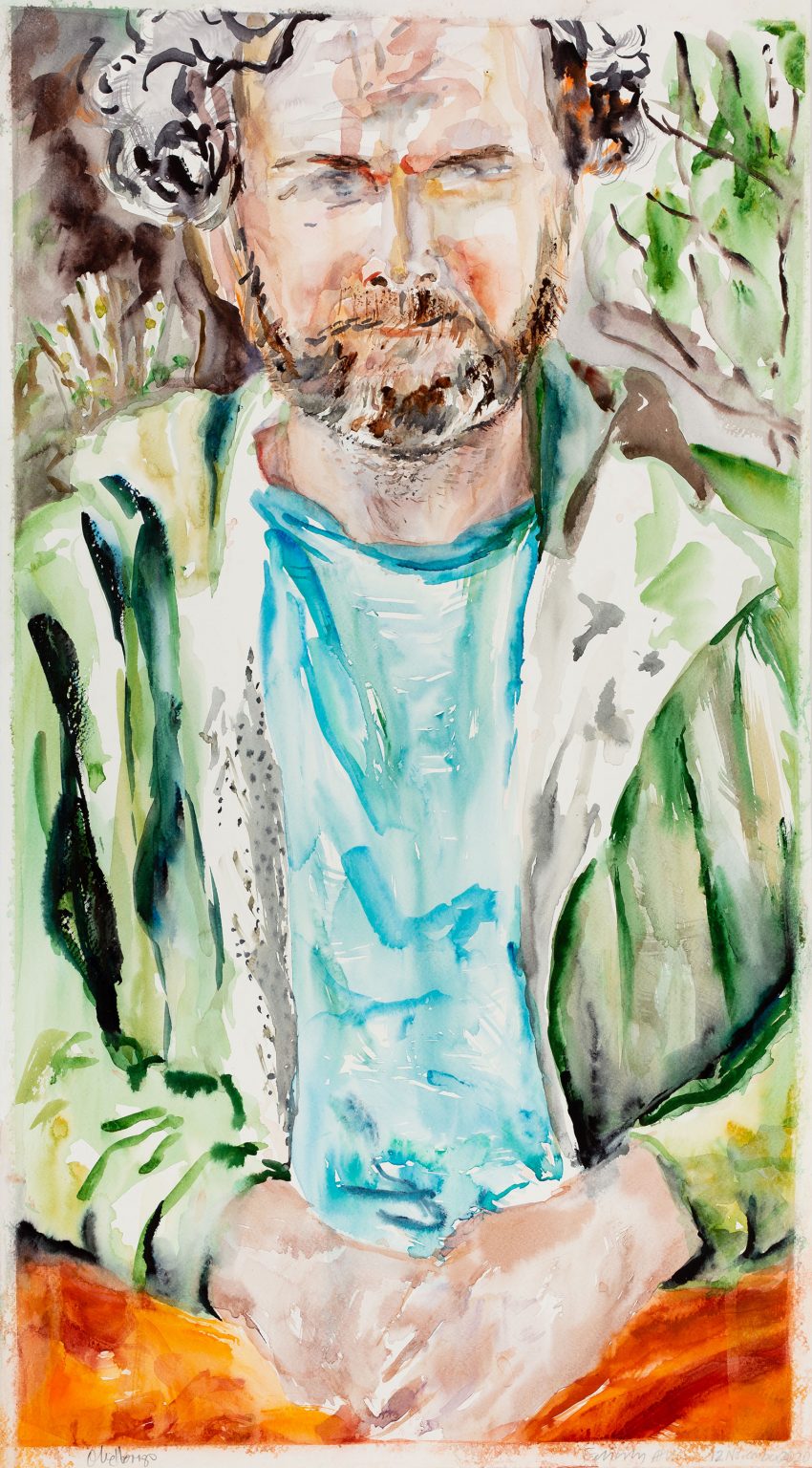
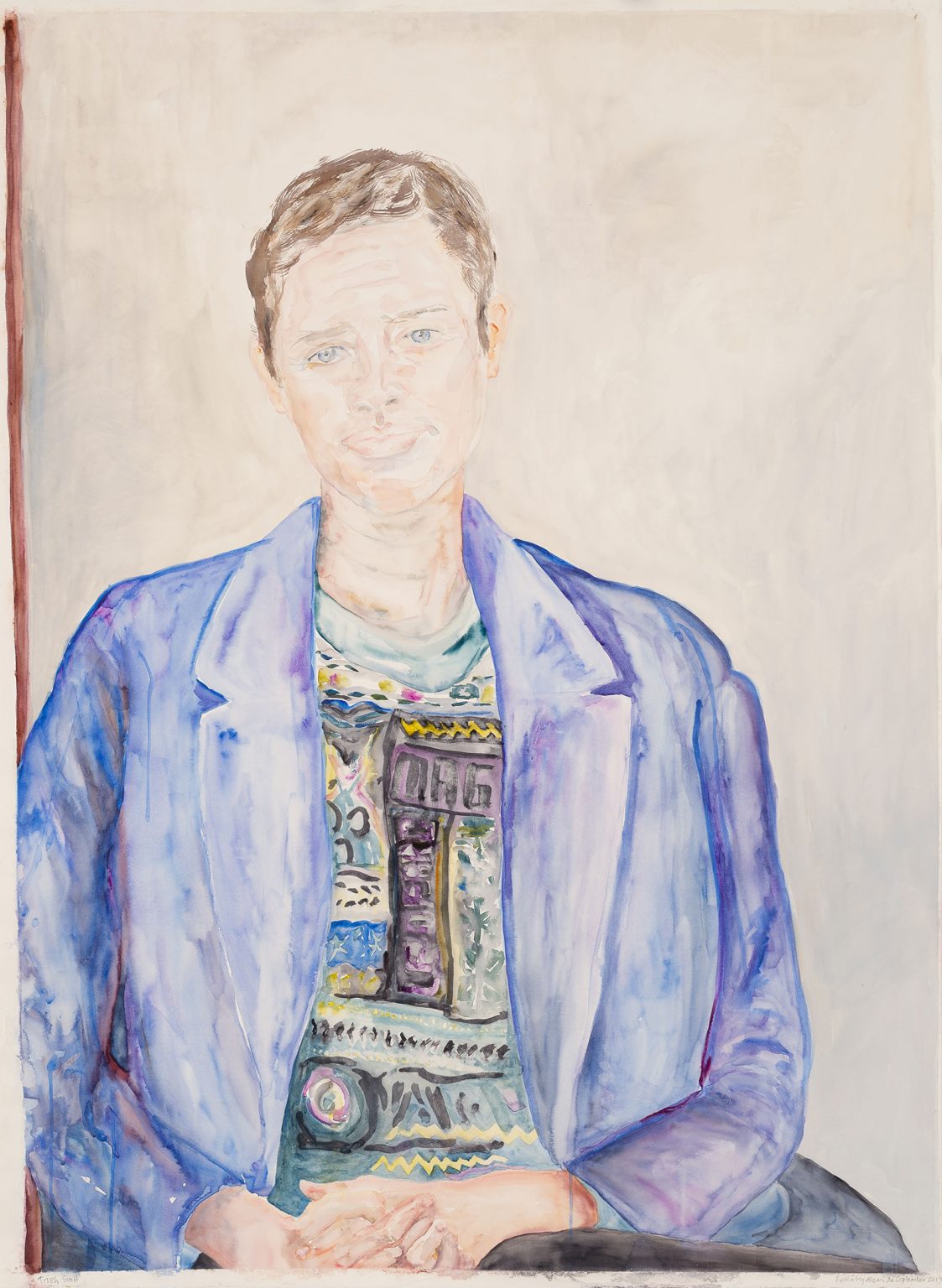
‘I’m very aware that my phone is listening to me. The devices in this house advertise to me based on conversations I’ve been having.’
Most of my Dialogic Portraits show only the head and shoulders of a single individual, face on, eye-to-eye. The focus on the face and, especially the eyes, seems to me to suggest an intensity of experience between the sitter and myself. You, the viewer are invited to take my position, as if I am your proxy and you mine. But in the portraits in this sequence I dilute this simplicity and, possibly therefore, that intensity. These show more of the body – more distance – or more than one person in a painting.
Historically a conversation piece is a picture in which two or more sitters are portrayed as if in conversation with one another. In all but one of these, I dispense with the conventional approach to a conversation piece in favour of two people, side by side, maintaining eye contact with the viewer(/artist), suggesting the possibility of each having a conversation with someone outside the space of the portrait. In the one portrait in which two people appear to be in conversation with each other, I had invited a poet who had already sat for me to join another sitting with a poet. As I painted I recorded their discussion as planned, and spontaneously decided to paint the two of them in conversation.
Painting people as heads and shoulders facing me (or you the viewer) with no props or backdrop excludes much possibility for narrative interpretation. However, by giving more detail of clothes, placing people side by side, or depicting props such as a phone and a hot water bottle, the portraits in this sequence encourage the viewer to imagine possible narratives. Going beyond the portrait’s eye-to-eye element of relational time spent between sitter and artist, their personal presence – and our joint orchestration of that presence – is denoted through style and composition.
Drag portraits to rearrange, click to enlarge







